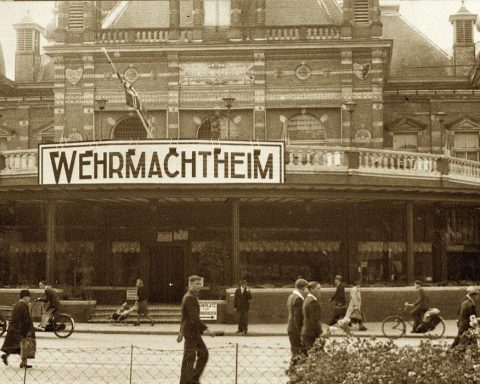Immediately after the landings at Wolfheze, the British troops were confronted with a problem that they had to deal with for days: poor communication via the radios.
Two things are often mentioned as the main reason for the poorly functioning radios: the radios were equipped with the wrong crystals and the wooded area of Arnhem meant that the radios had almost no range.
The truth is a little more nuanced.
To first dispel the myth of the wrong crystals: probably only two radios in Arnhem are equipped with the wrong crystals. The myth came into the world through the film A Bridge Too Far , in which a British radio operator exclaims that the radios are equipped with the wrong crystals.
Large distances
With regard to the wooded environment: the forests in Arnhem did play a role in the poor range of the radios. The built-up area of Arnhem and Oosterbeek also had an effect on the radio’s reach. But forests alone are not the cause of Britain’s communications problems. It is not that the forests reduced the radio’s range to zero, as is sometimes suggested.
After the Battle of Arnhem, General Boy Browing questioned the qualities of the Divisional Signals Regiment at Arnhem. Various radio amateurs also later doubted the qualities of the soldiers who were responsible for the radio communications.
That accusation does not seem justified. The Divisional Signals Regiment had already existed for two years and had performed its tasks without any problems during previous operations in North Africa and Sicily. The more than 350-strong unit also carried the same radio set that the British had used in previous operations.
The most important radio set of the British was the so-called Wireless 22. This was a radio set with which the British army had good experiences. The Wireless 22 radio set had been used earlier in 1944 without major problems by another airborne division in similar circumstances. The 6th British Airborne Division used the radio set during the Normandy landings.
“The radio set had a proven track record,” said Major John Greenacre, who investigated the poor British communications at Arnhem. According to Greenacre, the problem with the inadequate connections lay mainly with the large distances that had to be bridged with the radio set at the beginning of the Battle of Arnhem.
‘Echoes of Arnhem’
This is confirmed by Lewis Golden, who as an officer of the Royal Corps of Divisional Signals was present during the Battle of Arnhem. The radios also performed well, according to Lewis Golden. Frustrated, Golden wrote a book about the misrepresentation of British radio: “A false picture has been painted by writer after writer.”
Golden’s book ‘Echoes of Arnhem’ extensively discusses the core of the British radio problem. The troops of the Kings Own Scottish Border were stationed near Ede while the 2nd Battalion of the 1st Parachute Brigade held the Rhine Bridge in Arnhem: This was more than 15 kilometers apart.
Greenacre: “The last days of the battle were fought in a small perimeter in Oosterbeek. By this time many of the difficulties were overcome by the proximity of all the units.”
In short: the radios worked fine. It was the large distance between the units that did them in.









